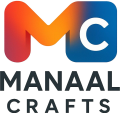The World of Printing: A Comprehensive Guide to Techniques, Applications, and Trends

Printing is an essential part of our daily lives, from the books we read to the packaging of products we use. It’s a versatile and ever-evolving field that combines artistry and technology. Whether you’re a business owner, a designer, or someone looking to understand the basics, this guide will walk you through the different types of printing, their applications, and the latest trends in the industry.
The Importance of Printing
Printing plays a crucial role in various industries, including:
- Marketing: Flyers, brochures, and banners help businesses promote their products and services.
- Publishing: Books, magazines, and newspapers rely on printing to reach their audiences.
- Packaging: Attractive and functional packaging is essential for branding and product protection.
- Personal Use: From custom invitations to photo prints, printing adds a personal touch to special occasions.
With advancements in technology, printing has become more accessible, efficient, and eco-friendly.
Types of Printing Techniques
1. Digital Printing
Digital printing is a modern, fast, and cost-effective method that uses digital files to print directly onto various surfaces. It’s ideal for small to medium print runs and offers high-quality results.
- Applications: Business cards, flyers, posters, and personalized items.
- Advantages: Quick turnaround, customizable, and no need for printing plates.
2. Offset Printing
Offset printing is a traditional method that uses plates to transfer ink onto paper. It’s best suited for large-scale projects and offers consistent, high-quality results.
- Applications: Books, magazines, newspapers, and packaging.
- Advantages: Cost-effective for large quantities, precise color matching, and high image quality.
3. Screen Printing
Screen printing involves pushing ink through a mesh screen onto a surface. It’s commonly used for textiles and promotional items.
- Applications: T-shirts, tote bags, posters, and signage.
- Advantages: Durable prints, vibrant colors, and versatile for different materials.
4. Flexography
Flexography is a form of rotary printing that uses flexible relief plates. It’s commonly used for packaging and labeling.
- Applications: Food packaging, labels, and corrugated boxes.
- Advantages: Fast production, suitable for non-porous materials, and eco-friendly inks.
5. Gravure Printing
Gravure printing uses engraved cylinders to transfer ink onto paper. It’s known for its high-quality and detailed prints.
- Applications: High-volume magazines, catalogs, and packaging.
- Advantages: Consistent quality, long print runs, and excellent for fine details.
6. 3D Printing
3D printing is an innovative technology that creates three-dimensional objects by layering materials. It’s revolutionizing industries like manufacturing, healthcare, and design.
- Applications: Prototypes, medical implants, and custom products.
- Advantages: Customizable, reduces waste, and enables complex designs.
Choosing the Right Printing Method
Selecting the right printing technique depends on several factors:
- Purpose: Consider the end use of the printed material (e.g., marketing, packaging, or personal use).
- Quantity: Digital printing is ideal for small runs, while offset printing is better for large quantities.
- Material: Different methods work best on specific materials (e.g., screen printing for textiles, flexography for packaging).
- Budget: Evaluate the cost-effectiveness of each method based on your project size.
- Turnaround Time: Digital printing offers faster results compared to traditional methods.
Applications of Printing
1. Marketing and Advertising
- Flyers and Brochures: Promote your business with eye-catching designs.
- Banners and Posters: Ideal for events and outdoor advertising.
- Business Cards: Leave a lasting impression with professionally printed cards.
2. Publishing
- Books and Magazines: High-quality printing brings stories and content to life.
- Newspapers: Reliable and cost-effective for mass distribution.
3. Packaging
- Product Labels: Attractive labels enhance brand appeal.
- Boxes and Bags: Functional and visually appealing packaging protects and promotes products.
4. Personal Use
- Photo Prints: Preserve memories with high-quality photo prints.
- Custom Invitations: Create unique invitations for weddings, parties, and events.
- Art Prints: Showcase your creativity with printed artwork.
Trends in the Printing Industry
- Eco-Friendly Printing
Sustainable practices, such as using recycled paper and eco-friendly inks, are gaining popularity. - Personalization
Customized prints, from names to unique designs, are in high demand for both personal and business use. - Digital Transformation
Advancements in digital printing technology are making it more accessible and versatile. - 3D Printing
The use of 3D printing is expanding across industries, from healthcare to fashion. - Interactive Prints
Augmented reality (AR) and QR codes are being integrated into printed materials for an interactive experience.
Tips for High-Quality Printing
- Choose the Right File Format: Use high-resolution files (e.g., PDF or TIFF) for the best results.
- Select Appropriate Paper: Consider weight, texture, and finish to match your project.
- Work with Professionals: Collaborate with experienced printers to ensure quality and accuracy.
- Proofread: Double-check your design for errors before printing.
- Test Prints: Request a sample to review colors, alignment, and overall quality.
Conclusion
Printing is a dynamic and essential field that continues to evolve with technology and creativity. Whether you’re looking to promote your business, publish a book, or create personalized items, understanding the different printing techniques and their applications can help you achieve the best results.
Explore the possibilities of printing and bring your ideas to life with precision and style. From traditional methods to cutting-edge technologies, the world of printing offers endless opportunities to create, communicate, and inspire.


